S+T+ARTS Prize Jury 2021
Alle Einreichungen werden von einer Jury bewertet, die zwei Sieger*innenprojekte und bis zu 10 Anerkennungen auswählt.
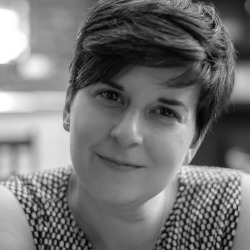
Alexandra Deschamps-Sonsino (UK) ist Autorin, Beraterin, öffentliche Rednerin und Unternehmerin im Bereich Internet der Dinge mit einem Hintergrund in Industrie- und Interaktionsdesign. Sie ist Autorin von ‚Smarter Homes: how technology will change your home life‘ und ‚Creating a Culture of Innovation‘ (Apress, 2018-2020), war die erste britische Distributorin von Arduino und ist die Gründerin der Good Night Lamp, die sich in der ständigen Sammlung des Londoner Design Museums befindet. Sie wurde auf Platz 1 einer Liste von 100 Internet of Things Influencers (Postscapes, 2016), auf Platz 2 der Top 100 Internet of Things Thought Leaders (Onalytica, 2014) gewählt.

Nicola Triscott PhD ist Kuratorin, Forscherin und Autorin und hat sich auf die Schnittstellen zwischen Kunst, Wissenschaft, Technologie und Gesellschaft spezialisiert. Seit 2019 ist Nicola Triscott Direktorin/CEO des FACT (Centre for Film, Art & Creative Technology) in Liverpool, UK, wo sie 2020 die Ausstellung And Say the Animal Responded? kuratierte. Zuvor war sie künstlerische Gründungsdirektorin/CEO von Arts Catalyst (von 1994 bis 2019) und Principal Research Fellow an der University of Westminster (2017-19). In 25 Jahren baute Nicola Arts Catalyst zu einer der profiliertesten und angesehensten Kunst- und Forschungsorganisationen Großbritanniens auf, die sich durch ehrgeizige Künstleraufträge auszeichnet, darunter bemerkenswerte Projekte von Tomás Saraceno, Otolith Group, Ashok Sukumaran, Marko Peljhan, Ariel Guzik und Critical Art Ensemble. Nicola hält Vorträge und publiziert international.

Alexander Mankowsky (DE), 1957 in Berlin geboren, studierte Sozialwissenschaft, Philosophie und Psychologie an der Freien Universität Berlin. 1989 begann er seine Tätigkeit im Forschungsinstitut von Daimler in Berlin. Der multidisziplinäre Zugang am Institut vereinte eine Fülle von Disziplinen, von Sozialwissenschaften bis zu künstlicher Intelligenz. Seine aktuellen Arbeitsthemen sind Zukunftsstudien, die sich mit der sich ständig ändernden Kultur der Mobilität, der gegenseitigen Abhängigkeit von sozialer und technologischer Innovation und anderen Aspekten in Verbindung mit möglichen Wegen in die Zukunft befassen.
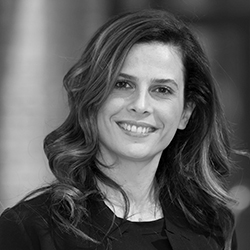
Francesca Bria (IT) ist die Präsidentin des Nationalen Innovationsfonds Italiens und Ehrenprofessorin des Instituts für Innovation und öffentliche Zwecke an der UCL in London. Sie ist Senior-Beraterin der Vereinten Nationen (UN-Habitat) für digitale Städte und digitale Rechte. Francesca Bria leitet das DECODE-Projekt zur Datenhoheit in Europa und ist Mitglied der hochrangigen Expertengruppe der Europäischen Kommission zu den wirtschaftlichen und gesellschaftlichen Auswirkungen von Forschung und Innovation (ESIR). Francesca hat einen Doktortitel in Innovation und Unternehmertum vom Imperial College, London, und einen MSc in digitaler Wirtschaft von der Universität London, Birbeck. Sie lehrte an mehreren Universitäten in Großbritannien und Italien und beriet Regierungen, öffentliche und private Organisationen.

Fumi Yamazaki, Senior Marketing Manager, APAC, Niantic Japan. Fumi kam im Februar 2018 zu Niantic und arbeitet am Marketing für Ingress, Pokémon GO und Harry Potter: Wizards Unite und die Niantic Developer Platform auf dem APAC-Markt. Im Jahr 2010 kam sie zu Google als Developer Relations Country Lead für Japan, arbeitete dann im Google Social Impact Team an Google Crisis Response, um der von Naturkatastrophen betroffenen Gemeinschaft zu helfen, und Civic Innovation, um mit den Bürger*innen zusammenzuarbeiten, um die Gesellschaft mithilfe von Technologie zu verbessern, und wechselte dann zum Google Advanced Technology and Projects Team, wo sie an Project Soli, das radarbasierte Gestensensoren entwickelt, und Project Jacquard, das interaktive Textilien mit leitfähigem Garn entwickelt, als Program Manager und Developer Relations Manager arbeitete. Bevor sie zu Google kam, arbeitete sie im Unternehmensvertrieb bei der Nippon Telegraph and Telephone Corporation (NTT), in der Internet-Marketing-Forschung bei Interscope sowie in den Bereichen Marketing, Event-Management, Entwicklung neuer Geschäftsfelder und Investitionen bei Digital Garage, DG Incubation und Technorati Japan.
S+T+ARTS Prize Advisors 2021
Die Advisors sind renommierte, internationale Berater*innen mit Expertise auf diesem Gebiet. Sie empfehlen Projekte und ermutigen ein breites Spektrum an möglichen Teilnehmer*innen zur Einreichung. Darüber hinaus achten sie auf Ausgewogenheit hinsichtlich Geschlecht und geografischer Herkunft der Teilnehmer*innen.
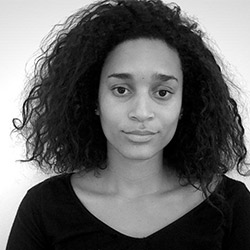
Amanda Masha Caminals (ES) ist Co-Direktorin und Kuratorin des Mutant Institute of Environmental Narratives (IMNA), dem Laboratorium von Matadero Madrid, das künstlerische Praktiken in Verbindung mit Journalismus, Wissenschaft und Technologie als Antwort auf die Herausforderungen der Klimakrise fördert. Zuvor leitete sie die CITY STATION der Environmental Health Clinic der Künstlerin Natalie Jeremijenko im Centre for Contemporary Culture of Barcelona (CCCB). Sie ist Gründerin der Organisation Translocalia, einem Netzwerk von Künstlern, Kuratoren und Designern, die durch Kunst für die Zukunft planen. Sie hat einen BA in Geisteswissenschaften, einen Abschluss in Kunstgeschichte und einen MA Hons in der Kuratierung zeitgenössischer Kunst des Royal College of Art in London.
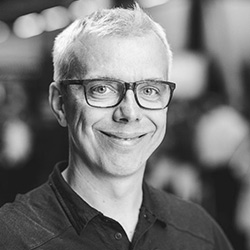
Andy Cotgreave ist Co-Autor von The Big Book of Dashboards und Technical Evangelist bei Tableau. Er ist Gastgeber von If Data Could Talk, Co-Host von Chart Chat und Kolumnist für Information Age. Außerdem ist er auf der dataIQ Top 100 der einflussreichsten Personen im Datenbereich 2021. Mit mehr als 15 Jahren Erfahrung in der Branche hat er Tausende von Menschen mit technischen Ratschlägen und Ideen inspiriert, wie sie Trends in der visuellen Analyse erkennen und ihre eigenen Fähigkeiten zur Datenerfassung entwickeln können. Bleiben Sie mit Andy in Kontakt, indem Sie seinen Sweet Spot-Newsletter abonnieren: kuratierte Geschichten darüber, wie Daten die Welt verändern. Oder folgen Sie ihm auf Twitter und LinkedIn.

Jennifer Heier ist Industriedesignerin von Herzen und hat sich auf User und Customer Research spezialisiert. Sie studierte Industrial Design in Darmstadt (Diplom), machte ihren Bachelor of Arts in San Francisco und ihren Master of Science in User Research in Edinburgh. Sie liebt es, in einem vielfältigen und disziplinübergreifenden Team nahe an neuen Technologiethemen zu arbeiten und dabei ihre Leidenschaft für human-centric-innovation einzubringen und den Status Quo kontinuierlich zu hinterfragen. Derzeit arbeitet sie bei Siemens digital industries data lab als Head of UX driven AI und bringt den menschlichen Faktor in den B2B-Kontext. Nebenbei promoviert sie an der Bauhaus-Universität in Weimar und untersucht, wie die Kreativ-Community die KI-Entwicklung positiv beeinflussen sollte und könnte. Sie glaubt an die Kraft ihres Berufs, einen Beitrag zu den Herausforderungen, aber auch Chancen des digitalen Zeitalters zu leisten und einen Mehrwert zu schaffen.
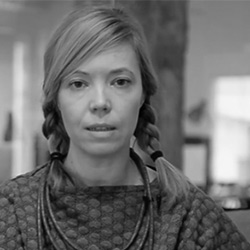
Nana Radenković ist eine der Mitbegründerinnen von Nova Iskra, wo sie sich auf die Schaffung von Mentoring-Programmen, Schulungen und Workshops für Einzelpersonen, Organisationen und Unternehmen konzentriert, die daran interessiert sind, eine aktive Rolle in den Prozessen der Transformation zu übernehmen – nicht nur ihrer Projekte und Unternehmen, sondern auch durch die Schaffung neuer Wege, in denen wir in Zukunft lernen, leben und arbeiten könnten. Sie hat einen MA in Management in Kultur, Interkulturalität und Mediation auf dem Balkan von der Universität der Künste Belgrad und verfügt über umfangreiche Erfahrungen in der Arbeit im privaten, öffentlichen und zivilen Sektor. Sie ist Professorin an der Fakultät für Medien und Kommunikation in Belgrad und Mentorin im Rahmen des Nelt Educational Program und Creative Mentorship.
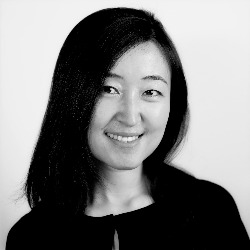
Lining Yao (CN) ist Assistenzprofessorin am Human-Computer Interaction Institute (HCII) der Carnegie Mellon University, School of Computer Science, und leitet dort das Morphing Matter Lab. Das Morphing Matter Lab entwickelt Materialien, Werkzeuge und Anwendungen von adaptiven, dynamischen und intelligenten Morphing-Materialien. Iher Forschung kombiniert Materialwissenschaft, rechnergestützte Fertigung, kreative Kunst und Designpraktiken. Das Labor arbeitet antidisziplinär und publiziert in den Zwischenbereichen von Wissenschaft, Technik, Design und Kunst. Lining promovierte 2017 am MIT Media Lab.
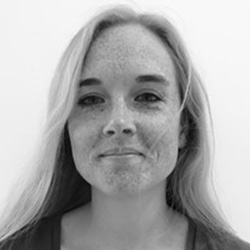
Fiona Zisch, Architektin und experimentelle Psychologin mit Erfahrung in Filmproduktionsdesign und Design für extreme Umgebungen – Fiona Zisch erforscht die Kognition, Erfahrung und Wechselwirkung von architektonischem Raum, Körper und Bewegung. Sie arbeitet zwischen dem Institute of Behavioural Neuroscience am UCL und der Bartlett School of Architecture. Sie unterrichtet auch experimentelle Psychologie im Grundstudium am UCL. Fiona spricht auf internationalen Architektur- und Neurowissenschaftskonferenzen und -festivals und organisiert diese. Sie hat an einer Reihe von multidisziplinären Forschungsprojekten mitgearbeitet und ist als Beraterin für Architektur- und Technologieunternehmen tätig. Sie hat Arbeiten und Buchkapitel in einer Reihe von Forschungsgebieten veröffentlicht.

Patrick van der Smagt ist Leiter der KI-Forschung im Volkswagen Konzern und leitet das Machine Learning Research Lab in München (argmax.ai). Das Labor konzentriert sich auf probabilistisches Deep Learning für Zeitreihenmodellierung, optimale Steuerung, Robotik und maschinelles Quantenlernen. Er ist außerdem Fakultätsmitglied der LMU Graduate School of Systemic Neurosciences und Forschungsprofessor an der Eötvös Loránd Universität Budapest. Er ist der Gründungsleiter einer europäischen Industrieinitiative zur Zertifizierung von Ethik in KI-Anwendungen (etami). Patrick leitete zuvor ein Labor als Professor für maschinelles Lernen und biomimetische Robotik an der Technischen Universität München, während er die Gruppe für maschinelles Lernen am Forschungsinstitut fortiss leitete. Er gründete und leitete das Assistive Robotics and Bionics Lab am DLR Oberpfaffenhofen. Vor vielen Jahren promovierte er an der Universität Amsterdam über neuronale Netze in der Robotik und im Sehen. Neben zahlreichen Veröffentlichungen und Patenten zu maschinellem Lernen, Robotik und Motorsteuerung hat er eine Reihe von Auszeichnungen erhalten, darunter den Erwin-Schrödinger-Preis der Helmholtz-Gemeinschaft 2013, den King-Sun-Fu-Gedächtnispreis 2014, den Harvard Medical School/MGH Martin Research Prize 2013 sowie Best-Paper-Awards bei Konferenzen und Journalen zum maschinellen Lernen und zur Robotik. Er war Gründungsvorsitzender einer Non-Profit-Organisation für Assistive Robotik für Tetraplegiker und Mitbegründer verschiedener Tech-Unternehmen.
Making the Invisible Visible – Reflections on the Here-and-Now and the Soon-to-Be
Statement of the S+T+ARTS Prize ’21 Jury (Francesca Bria, Alexandra Deschamps-Sonsino, Alexander Mankowsky, Nicola Triscott, Fumi Yamazaki)
From a staggering 1,564 entries, 805 projects were directly submitted to S+T+ARTS Prize’21.
As a ‘new normal’ required the jury to gather virtually for the second time in the history of the prize, a spirit of hope colored the discussions as vaccination schemes had begun around the world. Settled into a year of remote work, jury members from time zones spanning across the world were able to get to know each other, collaborate, argue, and make their way as a group to a final selection. This was, of course, without the ambiance of Linz and the pleasures of face-to-face meals and conversations but with the obvious and important environmental benefits of meeting virtually. If the crisis has taught us anything, it’s that other crises will be coming along shortly, and we might as well learn to live with change.
This sense that everything is changing also permeated the projects submitted. Many of them addressed the important issues of today in Europe and around the world: social injustice and climate change. Some chose to approach our ever-changing present with hope while others took a more journalistic approach of documenting our present in creative ways. Technical ambitions were high and the interest in new materials, new techniques, and ways to instrument our world out of a crisis were omnipresent. For others, it was a question of using technology to amplify the cultural impact of shared public space. Applicants showed us the power of cross-disciplinary collaboration while still retaining a strong sense of purpose and identity as artists. Over 96 countries were represented this year, proving that the interest in STARTS is continuing to expand across borders and into a wide range of creative and technical communities.
The natural systems that we are part of, our agricultural futures, the built environment and the fragile state of privacy online were some of the themes that emerged strongly. In that sense, the projects the jury chose to highlight in both their nominations and the prizes were about reflecting on the now and the soon-to-be. The COVID-19 crisis may have tampered the desire to predict a far-flung future when so much is possible now, today. The need to demonstrate the technical capabilities of today was an important dynamic. Perhaps the applicants were tired of speculating and wanted a little more action. The jury responded accordingly, choosing to award the prizes to projects that made the invisible systems that surround us a little more visible, understandable, beautiful, and something we can all act on today.
This ‘can do’ spirit was omnipresent this year as the COVID-19 crisis gives us a chance to reflect on how we might respond to more diffuse, complex, and multi-layered crisis. As the STARTS prizewinners announcement coincides with a surge of hope for our immediate future, artists, designers, scientists, and technologists everywhere were clear in their message: this is just the beginning of a journey that requires new tools and new skills. It’s up to us to respond to their invitation not only across Europe but around the world.
Grand Prize – Artistic Exploration
Awarded for artistic exploration and art works where appropriation by the arts has a strong potential to influence or alter the use, deployment, or perception of technology.
Oceans in Transformation
Territorial Agency – John Palmesino and Ann-Sofi Rönnskog
Oceans in Transformation is a strong call to collaborate across disciplines to deepen our knowledge of the oceans and to act together to safeguard the future of our living ecosystems. Housed inside the Church of San Lorenzo in Venice, in a place that can remind us of the wonderful and fragile balance between man and nature, the collaborative platform Ocean Space presents the multimedia exhibition conceived by the collaboration between the architects of Territorial Agency, TBA21–Academy, and e-flux Architecture. The work is the outcome of a three-year multidisciplinary investigation and research project on the state of the oceans in transformation, linking science, arts, and politics, by producing shared images of the oceans, earth science and remote sensing datasets with data from satellites, GPS, AI, sonar scans, and climate models produced by different actors and research disciplines, revealing the magnitude of the impact of human activities on the oceans. The project makes visible what is ultimately at stake in the Anthropocene, which is the health of our aqueous planet, presenting rapid sea level rise and marine degradation. Intensive fishing, deep-sea mining, and various other activities represent dangerous anthropogenic pollution factors of the oceans that can irreversibly modify our ecologies. The project is a large-scale collaboration involving interaction with hundreds of scientists, research institutions, NGOs, environmental activists, policy makers, and artists. It brings together a group of Ocean Fellows and a rich program of digital initiatives and activities to broaden and deepen our knowledge of the Anthropocene ocean that can be accessed on the digital platform ocean-archive.org.
Grand Prize – Innovative Collaboration
Awarded for innovative collaboration between industry or technology and the arts (and the cultural and creative sectors in general) that opens new pathway for innovation.
Remix el Barrio, Food Waste Biomaterial Makers
Anastasia Pistofidou, Marion Real and The Remixers at Fab Lab Barcelona, IaaC
Remember the 19th century Arts & Crafts Movement? Remix el Barrio can be seen as translation of Arts & Crafts into our times, confronting well-known contemporary issues with manufacturing and consumption in our daily life. Remix El Barrio is a collective of designers who propose projects with food leftovers using artisan techniques and digital manufacturing. They collaborate with agents from the Poblenou neighborhood to promote a more local and circular ecosystem. In their manifesto they want to “promote artisan-manufacturing sites and designer/craftsman cooperatives in the development of short-loop products, creating direct synergies with neighborhood actors, facilitate the access and the rehabilitation of abandoned sites, support logistics, and partnerships between local actors.”
The jury was most impressed by the wide array of beautifully up-cycled products made from waste—ranging from dye colors made from avocado stones, bioplastics out of orange peel, soaps from used oil, or paper made of coffee peels. Their initiative, Organic Matters, explores the intersection between design, biology, chemistry, technology, material science, community, and self-sufficiency. It could be interpreted as a reformulation of the STARTS idea itself.
Honorary Mentions
A Lighter Delicacy
Sorawut Kittibanthorn
Food waste is a major concern around the world and has a major impact on climate change. It also flies in the face of global poverty, which is also on the rise again for the first time in 20 years. Sorawut Kittibanthorn wants us to rethink a common food by-product, chicken feathers, and put them back in the center of a meal. Rich in protein, they could easily be turned into a foodstuff that would rival soya, tempeh, and other similar by-products. Kittibanthorn challenges us by putting on a Michelin-star looking meal with the processed feathers at the center, inviting us to change our minds about what is waste and what is food. The project sits very well in a food landscape that is diversifying and where even dried insects are starting to feature more prominently. The impact of turning a waste by-product into a foodstuff could save the feathers from landfill, keep them out of our rivers, and in turn help feed others. These are all important and critical ideas that should travel far and wide, especially in our foodie circles.
Cloud Studies
Forensic Architecture
Cloud Studies propose a new and radical approach to investigate contemporary clouds, suggesting the need for an alternative cartography of critical zones. It is a video work that assembles eight recent investigations by Forensic Architecture under the common theme of toxic clouds in different geographical locations and local contexts—from chemical white phosphorus and glyphosate used in Gaza, tear gas used to disperse crowd protests in Hong Kong, methane in Argentina, or chlorine used in the Syrian town of Douma, and arson used to eradicate Indonesian forests for industrial plantations. In the turbulent and fragile year of the COVID-19 pandemic, where the relationship between nature, ourselves, and technology appears dangerously unbalanced, Cloud Studies reflects on the global atmosphere dominated by toxic clouds that colonizes the air we breathe and shapes our environment and our perception, prompting collective resistance and protests. Clouds are also a metaphor for the fragility and porosity of borders, since we are all connected and close, breathing the same toxic air. It is clearly denouncing how state and corporate powers continuously mobilize new types of clouds to control and manipulate human behaviors and their environment. Toxic clouds colonize the air we breathe, leaving traces everywhere, and it is hard not to relate it to the infrastructural “clouds” that colonize our digital life today, amassing information and data that can be used and monopolized in various ways. Audio recordings and the audiovisual narrative, together with the essays and texts read by their authors are also made accessible in a virtual exhibition platform, providing more in-depth information for the audience: https://critical-zones.zkm.de/#!/detail:cloud-studies
Data Garden
Grow Your Own Cloud
Global energy consumption of data centers is a huge issue for the global environment. Data centers are emitting as much CO2 as the aviation industry, and these numbers are growing exponentially. Data Garden is an organism-based data center, a carbon negative data infrastructure that can store and retrieve data from the DNA of plants, using organisms that create its own energy. Through this project, the Grow Your Own Cloud team aims to build an organic cloud that emits oxygen rather than CO2. From speculative research working with local flower shops to be transformed as decentralized data centers, to working with researchers at the University of Washington, actually converting computational data such as JPGs and MP3s into DNA. Data Garden and its installation inspires the audience regarding how humans may be able to work with nature and data, creating regenerative data ecosystems.
ELEVENPLAY x Rhizomatiks “border 2021”
MIKIKO, Daito Manabe, Motoi Ishibashi, Takayuki Fujimoto, evala, ELEVENPLAY, Rhizomatiks
What is real and what is virtual? As technology advances, some technologies are capable of making such borders invisible. border 2021 is a project that challenges the audience with a highly immersive experience transforming the border of the virtual and the real world. With a combination of personal mobility device and VR-headset, the audience experiences an immersive performance art going back and forth between the fictional world of VR/AR and the real world brought back by the physical touches of dancers confusing various boundaries. Everything in this project moves, from physical objects, the audience on personal mobility devices, and dancers, all of which is programmed, choreographed, and performed extremely precisely. Coping with the post-COVID-19 era, the project also provides a unique online viewing experience enabling the viewers to select viewpoints of multiple perspectives such as a bird’s eye view of the entire venue, and the control screen of the controlling software. border 2021 impresses the audience with the artistic and technical quality of the implementation, the multidisciplinary collaboration, and innovative nature of how the project is pushing the boundaries of what people could perceive in the future as “real” and “virtual.”
mEat me
Theresa Schubert
Not since Lee Miller photographed a severed breast on a dinner plate in 1929 and Orlan’s performances of carnal art of the 1990s have we seen human flesh as food for thought. Veganism doesn’t seem too extreme compared to the impressive work of artist Theresa Schubert. Taking our obsession with meat, the realities of gene manipulation, and our food production realities, she really does make us eat hyper-locally. Her videos and photographs explain the process of turning a sample of her own blood cells into lab-grown meat. By treating the human body as just another food choice, her work puts us back into the animal kingdom and Nature where we belong. It’s bold and might even be shocking to some, but the reality is, if we treat our own bodies the way we treat the bodies of the animals that help us both to nourish us and to overcome disease, we might find commonalities instead of differences.
On View
Ania Catherine, Dejha Ti
In modern society, users are constantly exposed online to various addictive interfaces, surveillance, and data privacy, often not knowing what is actually going on. On View (2019) is an installation that allows the audience to interact with those interfaces in the virtual world, with no virtual layer, being exposed directly to that awkwardness that is usually hidden behind the online interactions. Through the installation, the audience is forced to experience, learn, and feel the weight of what is actually going on when they sign the Terms & Conditions online that they may not read, unaware that they may be signing up for facial detection and facial recognition. On View raises awareness of the issues such as privacy, data protection, data ethics, and surveillance capitalism, which are concerns often addressed in Europe with the GDPR.
Project Habitate
Yuning Chan, Tom Hartley, Yishan Qin
When we are talking about the Anthropocene with its destruction of the biosphere, then we imagine large mammals, whales or the Amazon forest. What is missing in our cultural imagery of nature, is the barely visible, in case of trees the profane: mosses, lichen, and fungi. In Project Habitate, the artists have created scientifically proven wearables which are ready to be accepted by mosses, lichen, and fungi. The wearer would be enabled to replace a tree as host. The original host is the ash tree: the jewelry mimics the ash tree’s bark texture, light level, porosity, and pH and leverages human movement to support guest species’ spore dispersal. The living wearable can be seen as an indicator of ecological-social connectivity, as a reminder that no species is an island. From the STARTS perspective, Project Habitate provides scientifically sound ideas on how the destructive aspects of the Anthropocene can be countered through the creation and application of materials that can serve as habitats for neglected species.
The Growing Pavilion
Company New Heroes / Biobased Creations (NL)
Biobased or recycled materials are often evaluated solely as replicas of today’s conventional one-way-ticket materials. Contemporary mainstream aesthetics reflect a production process in which the product itself can be endlessly replicated in sameness—but only until the resources are depleted. Nature shows a different approach, there is neither resource depletion, nor sameness. The Growing Pavilion communicates a future-proof approach to beauty, where everything is unique in texture and color. The walls are grown out of locally harvested plants and mycelium, forming a kind of organic skin instead of an evenly white wall. The creators have reinforced the new aesthetics of growing with the exhibition of unique pieces by Aniela Hoitink, Christien Meindertsma, Diana Scherer, Eric Klarenbeek, Martijn Straatman and HuisVeendam. The core idea of growing instead of manufacturing is seen as a very promising pathway into a sustainable future.
The Living Light
Nova Innova
Microbial Fuel Cell technology (MFC), the idea of using microbes to produce electricity, has been known since 1911, when Michael Cressé Potter made the subject public. In Pop Culture, the banana fed time machine was able to send mad scientists ’Back to the Future‘. But The Living Light is different—it is a practical approach to literally illuminate the mutual dependence between nature and mankind. The Living Light is about to implement Plant Microbial Fuel Cell technology in our day-to-day lives—reaching from your indoor plant providing light at home to illumination in urban parks, powered by the organisms in the soil. The Living Light is a beautifully crafted beacon into a future, where life itself can contribute to our civilization, replacing endless numbers of batteries. Especially interesting for STARTS is The Living Light as an eye opener for the engineers of the sensory based Internet of Things, where many small devices will need weak energy sources that cannot be maintained by a complicated energy network or batteries.
The Tides Within Us
Marshmallow Laser Feast, Fraunhofer MEVIS, Natan Sinigaglia
The Tides Within Us is a unique trip into the human body, following real blood flow heart data captured by an MR scanner that amplify our perception of the body and its boundaries. Where does the human body begin, and where does it end? What’s the relationship between humans and nature? An immersive scientific exploration with interactive screens that allow the audience to explore the fluidity of the human ecosystem, mapping the flow of oxygen through the cardiovascular system, thus challenging the boundary between our bodies and our environment, beyond the limit of our perception. This arts–science partnership between the Marshmallow Laser Feast (MLF) and pioneers in medical image computing Fraunhofer Institute for Digital Medicine MEVIS, shows that everything is connected and that we share a similar structure to nature. The expertise of Fraunhofer Institute in digital medicine and the MR-Lab research made possible the artistic exploration of MLF using scientific medical data sets and advanced capturing techniques at scale, to create a human 600 feet tall. In a moment of strong evolution and transformation of digital medicine, this work opens up our imagination and perception: at this scale, lungs look like trees, arteries like river deltas, and neural pathways like thunderstorms, opening novel ways of experiencing our bodies, and changing the way people learn and think about the body in relation to the environment. The Tides Within Us is an ongoing science–arts collaboration that will continue to evolve and expand.
Nominations
An Olfactory Biopolitics Nairobi
Coltrane McDowell
Constructing Connectivity
Jessica Smarsch
Extendable Ears
Sheng-Wen Lo
Face Lab
Håkan Lidbo
Genetics Gym
Adam Peacock
Glacier’s Lament
Jiabao Li
In a Small Room
KyungJin Jeong
In Event of Moon Disaster
Halsey Burgund, Francesca Panetta
Lovewear
Ivan Parati, Emanuela Corti, Witsense
MyComythologies
Saša Spačal
Para-optic-8
Anastasia Alekhina
Shapes and Ladders: Battles of Bias and Bureaucracy
Ani Liu, Michelle Lim, John Ahloy, Andrea Li
Silencing The Virus
Lily Hunter Green
So far the Skies are silent
A Series of Audiovisual Performances for Radio Telescopes and Artificial Intelligence
Quadrature
Symbiosia
Thijs Biersteker
The [Uncertain] Four Seasons
AKQA, Jung von Matt
The Cleanroom Paradox
Felix Lenz, Angela Neubauer, Eszter Zwickl
TheirTube
Tomo Kihara




